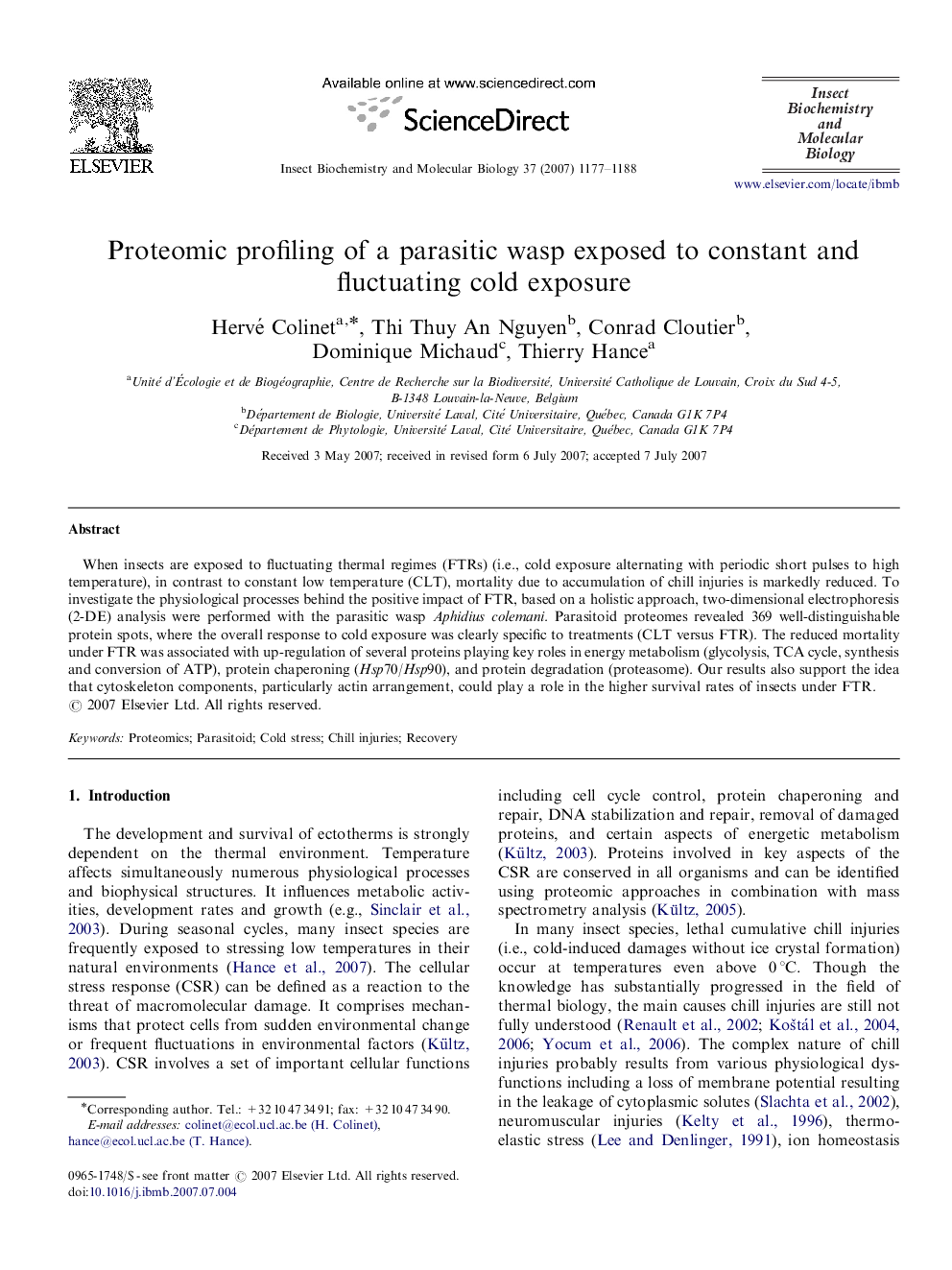| Article ID | Journal | Published Year | Pages | File Type |
|---|---|---|---|---|
| 1982950 | Insect Biochemistry and Molecular Biology | 2007 | 12 Pages |
When insects are exposed to fluctuating thermal regimes (FTRs) (i.e., cold exposure alternating with periodic short pulses to high temperature), in contrast to constant low temperature (CLT), mortality due to accumulation of chill injuries is markedly reduced. To investigate the physiological processes behind the positive impact of FTR, based on a holistic approach, two-dimensional electrophoresis (2-DE) analysis were performed with the parasitic wasp Aphidius colemani. Parasitoid proteomes revealed 369 well-distinguishable protein spots, where the overall response to cold exposure was clearly specific to treatments (CLT versus FTR). The reduced mortality under FTR was associated with up-regulation of several proteins playing key roles in energy metabolism (glycolysis, TCA cycle, synthesis and conversion of ATP), protein chaperoning (Hsp70/Hsp90), and protein degradation (proteasome). Our results also support the idea that cytoskeleton components, particularly actin arrangement, could play a role in the higher survival rates of insects under FTR.
